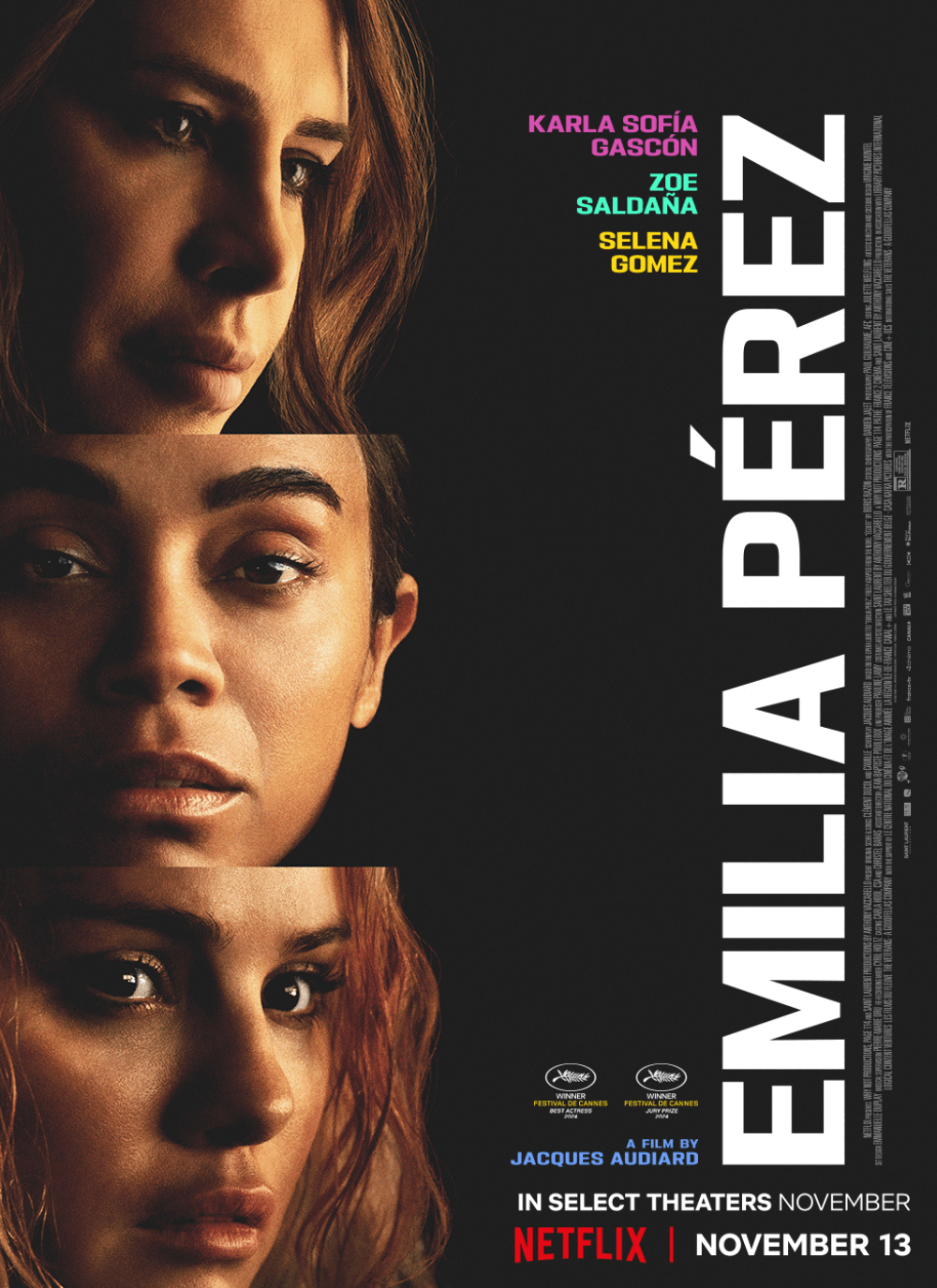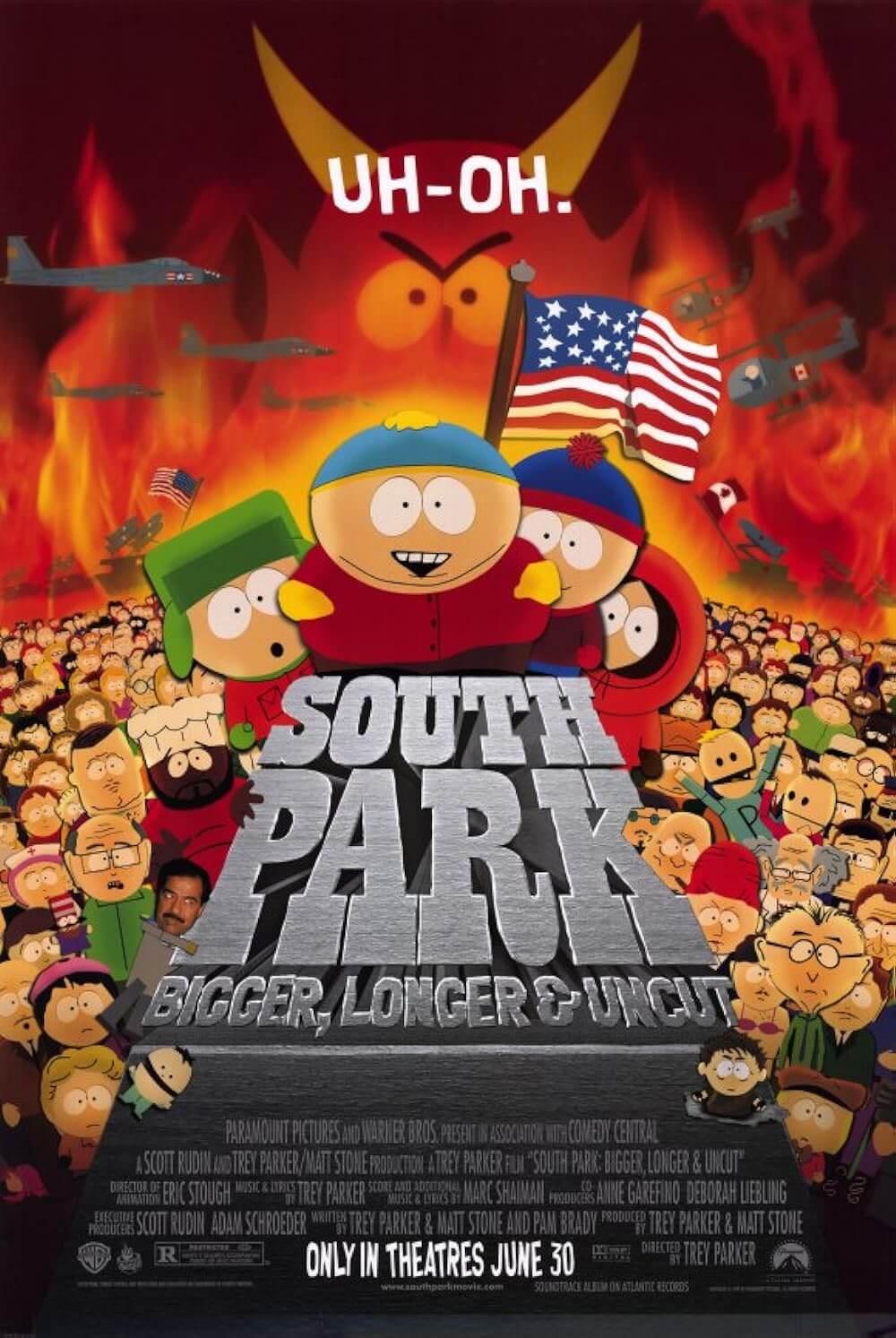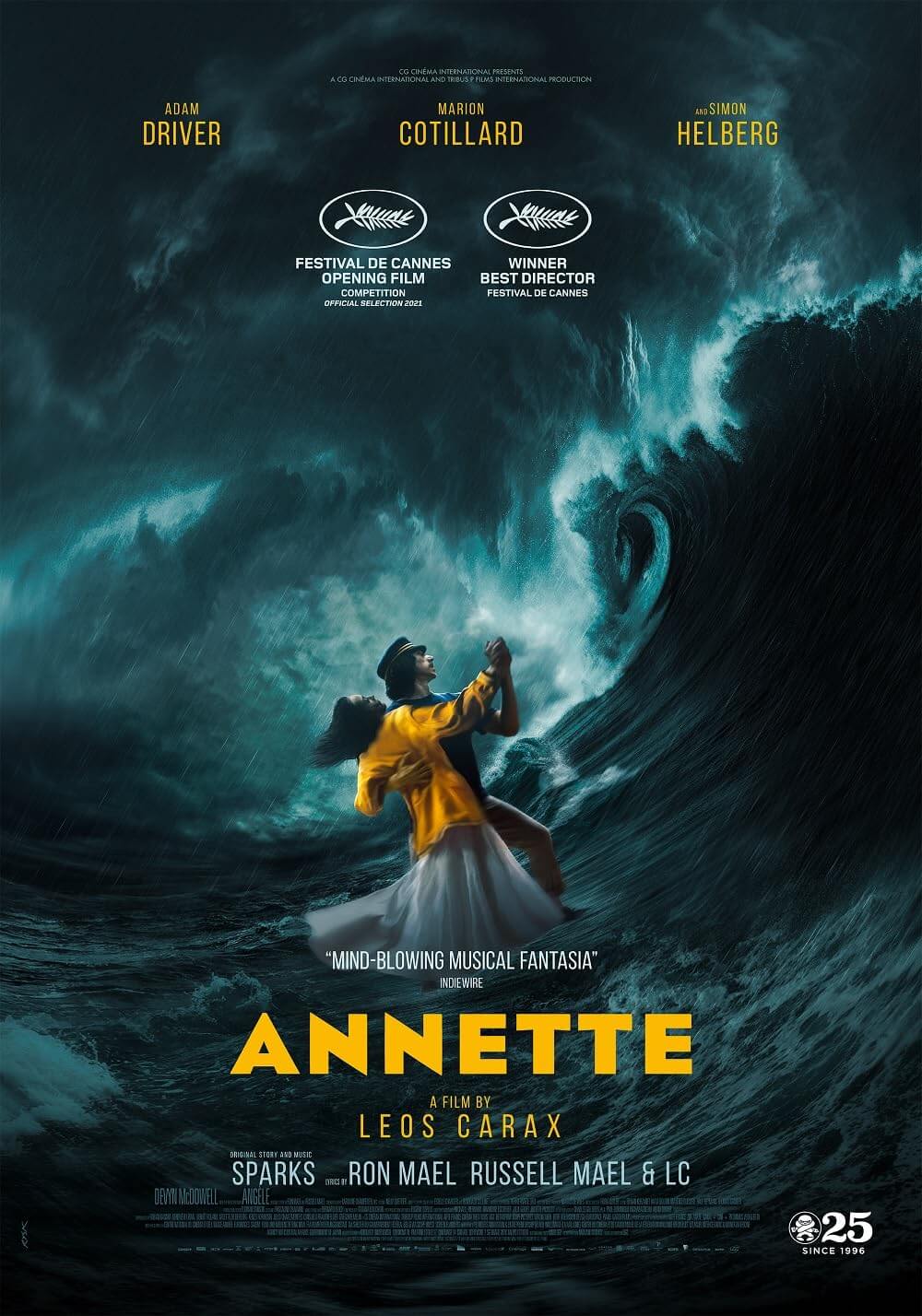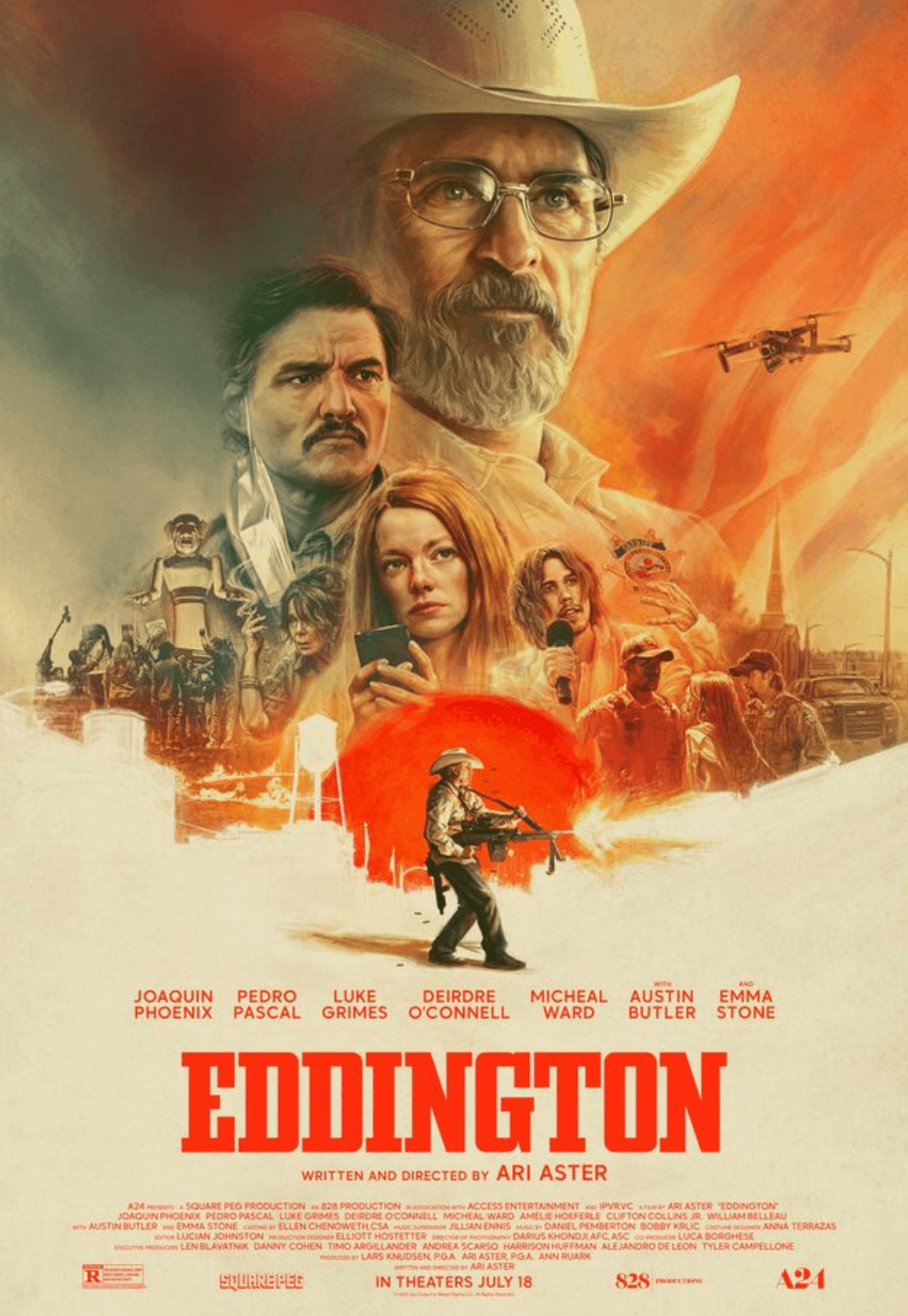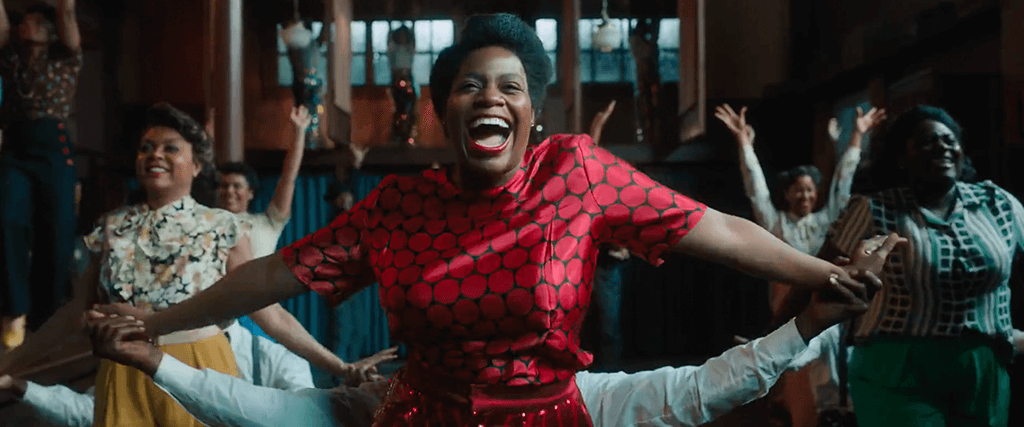
The Color Purple
By Brian Eggert |
After its debut in 1982, Alice Walker’s original novel, The Color Purple, a Pulitzer Prize and National Book Award winner, faced bans and challenges in many school curriculums and libraries. The largely white and Christian detractors continue to take issue with its depictions of “homosexuality, violence, African history, rape, incest, drug abuse, explicit language, and sexual scenes,” according to The Banned Books Project. The 1985 film adaptation, directed by Steven Spielberg, removed much of this potency from the text, softening the violence and downplaying the queer relationship that develops. But it, too, received criticisms for its sentimental adaptation and oversimplification of a complex text, which was turned into an uncontroversial and, in cinematic terms, accessible production. If Spielberg’s film could be accused of turning the harrowing Georgia setting into an almost idyllic movie world rather removed from reality compared to the book, the new musical adaptation, based on the 2005 Broadway production (written by Brenda Russell, Allee Willis, Stephen Bray, and Marsha Norman), might face the same charges. The Color Purple reduces the ineffaceable power of Walker’s narrative into a splashy, glitzy good time.
Whether it should be so light is debatable, and that will surely be confronted by writers more offensible and protective of Walker’s text than I, but I would be remiss if I didn’t admit to feeling unchallenged by the musical version. Musicals have an inherent unreality that, if not treated appropriately, may rob the material of its potential impact. Cabaret (1972), for instance, struck a balance between the joy of the musical numbers and the dread of rising fascism in Weimar Republic-era Berlin. This 2023 cinematic adaptation of The Color Purple by Ghanaian filmmaker Blitz Bazawule (Beyoncé’s Black Is King, 2020) operates in a safe space, where even brutal domestic abuse can be followed with an airy, carefree musical number. Deeply felt emotions or traumatic encounters get washed over with a song, a dance, and a bombastic tone associated with the musical genre. And while I must acknowledge that the Broadway musical is a commercially successful and Tony Award-winning production, and the film version has talent to spare in front of and behind the camera, the blend of subject matter and blithe musical stylization felt incongruous to me.
The Color Purple opens in the early 1900s and unfolds over the next half-century, following a young African-American woman in the rural South. Celie and her sister Nettie (Phylicia Pearl Mpasi and Halle Bailey, respectively) become separated after their father arranges a marriage between Celie and a man known initially as Mister (Colman Domingo), who denies the sisters’ communication after Nettie rejects his advances. Years pass, and Celie, played by Fantasia Barrino as an adult, endures Mister’s regular beatings and cruelty. It’s not until Shug Avery (Taraji P. Henson) enters the scene that Celie experiences more of life and romantic love than her abusive husband provides. Elsewhere, Mister disapproves of his son Harpo (Corey Hawkins) marrying the strong-willed Sofia (Danielle Brooks), who is pregnant. When the coupling fails, the son builds a night spot called Harpo’s Juke on the river. As the years pass, Celie grows ever more discontented with Mister and his father (Louis Gossett Jr.), from whom he learned how to treat women. But gradually, Celie, Shug, and Sofia set aside the domineering men in their lives in search of independence.
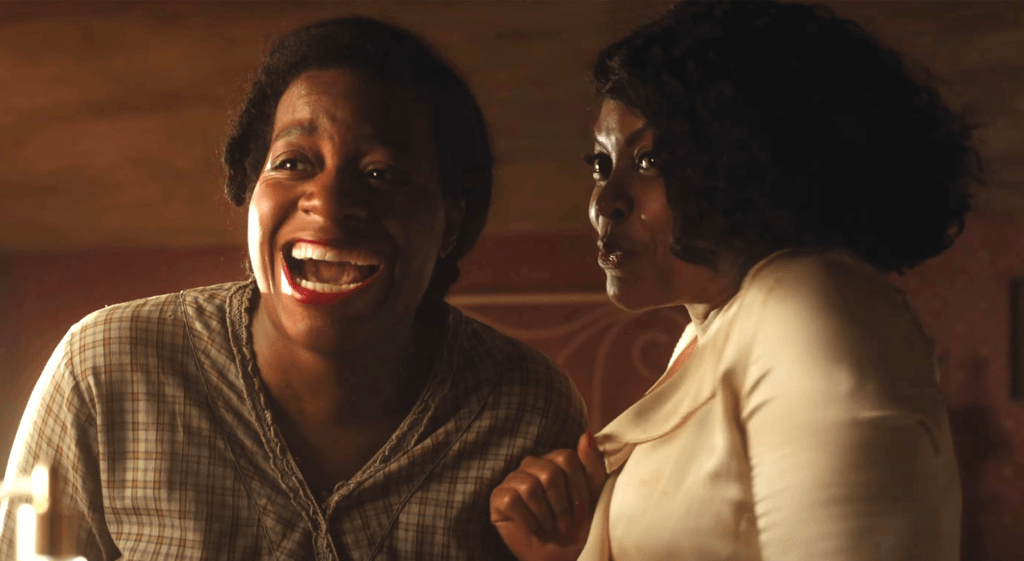 Of course, Bazawule’s film makes changes to previous versions, but that’s inherent to adaptation. Though I have not seen the stage musical, Playbill reports that about a third of the songs have been removed, leaving some perturbed by its lack of faithfulness. Still, there’s a blend of blues, gospel, and jazz in the film, with Bazawule finding inspired ways of conveying them, often evoking many classical Hollywood musicals. A dazzling sequence with Celie and Shug in a movie theater, where they dream themselves into an Art Deco fantasy shot in black-and-white just before sleeping together, is a film highlight. Marcus Gardley’s script speaks to today’s more inclusive moviegoers who won’t balk at the lesbian relationship. But Gardley mutes the domestic and racial violence on display compared to its source. Yet, the stark reality with which Bazawule handles Sofia’s subplot—where she refuses to work for the mayor’s wife (Elizabeth Marvel), ends up in the county jail, and her defiant spirit, evidenced in the rousing song “Hell No,” is temporarily broken—is stirring. In many other cases, the confronting nature of what’s happening in the story feels at odds with the escapism of the musical format. This leaves hard moments, such as Mister’s eventual redemption from an abuser to a welcomed member of Celie’s family, to feel dramatically unearned.
Of course, Bazawule’s film makes changes to previous versions, but that’s inherent to adaptation. Though I have not seen the stage musical, Playbill reports that about a third of the songs have been removed, leaving some perturbed by its lack of faithfulness. Still, there’s a blend of blues, gospel, and jazz in the film, with Bazawule finding inspired ways of conveying them, often evoking many classical Hollywood musicals. A dazzling sequence with Celie and Shug in a movie theater, where they dream themselves into an Art Deco fantasy shot in black-and-white just before sleeping together, is a film highlight. Marcus Gardley’s script speaks to today’s more inclusive moviegoers who won’t balk at the lesbian relationship. But Gardley mutes the domestic and racial violence on display compared to its source. Yet, the stark reality with which Bazawule handles Sofia’s subplot—where she refuses to work for the mayor’s wife (Elizabeth Marvel), ends up in the county jail, and her defiant spirit, evidenced in the rousing song “Hell No,” is temporarily broken—is stirring. In many other cases, the confronting nature of what’s happening in the story feels at odds with the escapism of the musical format. This leaves hard moments, such as Mister’s eventual redemption from an abuser to a welcomed member of Celie’s family, to feel dramatically unearned.
Then again, Bazawule told The New York Times that he intended the more fantastical musical numbers to counteract “the notion that abused people are docile.” Rather, they’re constantly negotiating their situation and finding ways to escape. His arguments make sense, and I cannot deny that Hollywood movies too often dwell on misery for emotional impact; the more wretched we feel, the more primed it is for serious consideration. Perhaps the emphasis should be placed on the hope these characters feel instead of their pain. Certainly, this new version of Walker’s story continues the tradition of repurposing the material in a different style and medium; it’s not afraid to be its own thing, even while maintaining ties to what came before. To be sure, a lot of big names who worked on Spielberg’s film helped bring this production to life and championed its differences. Spielberg serves as executive producer alongside Oprah Winfrey (Sofia in the 1985 version) and Quincy Jones (who produced the original score). Even Whoopi Goldberg (Celie in the 1985 film) makes a brief appearance as a midwife.
The Color Purple’s dramatic powers and musicality didn’t come together for me, yet the sheer pleasure of the individual musical numbers and the performances within them distracts from that. Fatima Robinson choreographs harmonious dancing, and cinematographer Dan Laustsen delivers gorgeous imagery, full of color and life. However, Bazawule and editor Jon Poll adopt an overall rhythm where the lulls feel cavernous and the highs sing to the back row, while everything in between falls flat with Kris Bowers’ recessive score. If there’s one reason to see The Color Purple, it’s the cast. Barrino is resoundingly good, both in her singing and her character’s moving arc; the same is true of Henson, who’s perfectly cast and has the sauciest song to perform. Domingo, as ever, is marvelous. But the standout is Brooks, who steals every scene she’s in. Afterward, I walked away admiring these performances and the production values more than feeling moved by the story overall. Maybe that’s a reason to revisit Walker’s book.
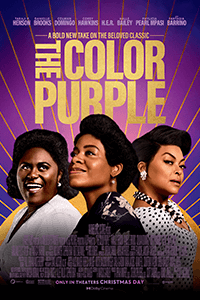
Unlock More from Deep Focus Review
To keep Deep Focus Review independent, I rely on the generous support of readers like you. By joining our Patreon community or making a one-time donation, you’ll help cover site maintenance and research materials so I can focus on creating more movie reviews and critical analysis. Patrons receive early access to reviews and essays, plus a closer connection to a community of fellow film lovers. If you value my work, please consider supporting DFR on Patreon or show your support in other ways.
Thank you for your readership!
Brian Eggert | Critic, Founder
Deep Focus Review


